- Home
- John Sandford
Chosen Prey Page 12
Chosen Prey Read online
Page 12
Getting old.
Lucas stood in his office door, chatting with Baxter, while Ware slumped on a chair and picked at his cuticles. He’d also aged after the long night in the lockup. Yesterday, his gray-on-black shirt and jacket had looked arty; today they looked drab. Then Sloan banged into the office and asked, cheerfully, “Everybody ready?”
Lucas nodded, and Sloan dragged an extra chair into the office, plugged in the tape deck, checked the cassette, and then recited everybody’s names and the date, looked at Ware, and said, “Looks like you had a pretty bad night.”
“Ahhhh,” Ware said in disgust.
“It’s a problem when somebody comes in late,” Sloan said. “The courts just won’t move themselves around to have round-the-clock bail hearings.”
“I think it’s absurd. You’re supposed to be treated as if you’re innocent until proven guilty.”
“No,” Sloan said. “You are innocent until proven guilty.”
“That’s right, that’s right.”
Baxter looked at Lucas and rolled his eyes. They both knew what Sloan was doing—he was getting on Ware’s side. “Why don’t you ask a question,” Baxter said to Sloan. “We can have the blood-brother ceremony later.”
Morris Ware listened to the story of the drawings, then looked at the drawings. “Very nice,” he said, but he said it with a bored tone that sounded genuine.
“What?” Lucas asked. “They’re not to your taste?”
“No, they are not,” Ware said.
“You like the young stuff,” Lucas suggested.
“I am not interested in bodies,” Ware said. “I am interested in qualities— innocence, freshness, dawning awareness . . .”
“Let’s cut the horseshit, Morrie,” Lucas said. “Look at this guy.”
Ware took the printed-out photo of the actor from Day of the Jackal. “Yes?”
“Who do you know in the sex-freak community who looks like this—a guy with connection to the arts, who knows about computers and photography, is interested in blond women, who might like to strangle them?”
Ware looked over the photo at Lucas. “If I knew, it’d be worth a lot more than dropping this stupid cocaine charge.”
“On the other hand, if you know and don’t tell us, and we find out—that’s accessory to first-degree murder. When a known child pornographer is charged with murder, sometimes the juries aren’t too fussy about how strong the evidence is,” Lucas said.
“I’m not—Fuck you.”
Sloan eased in: the good guy. “Take it easy, Lucas, we want the guy to cooperate.”
“Dickweed says he’s not a pornographer,” Lucas snapped.
Sloan held up a hand, then looked at Ware. “Let’s forget the pornography stuff. Who do you know? That’s the question.”
Ware looked down at the photo again, then back at Sloan. “You know, this is a fashionable look among the art crowd—that languid, ascot-wearing, private-school look.”
“So you know some people?”
“I could give you five or six names of people, um, in the art community who, um, also have an interest in nonconventional sexuality.”
“Great,” Sloan said.
“But I don’t think any of them will be your man,” he said.
“Why not?” Sloan had the ability to project eagerness for an answer.
Ware closed his eyes and tilted his head back. “Because I think I met your man. At a photography show at the Institute.”
“The Institute of Art,” Sloan said.
Ware nodded without opening his eyes. “But it was a long time ago—ten years, maybe. The fellow was maybe twenty-five, and he was looking at a series of nudes by Edward Weston. I can sometimes tell by the way people look at . . . pictures . . . that they are enthusiasts. He had the look—and by the way, he doesn’t so much look like the man in your photograph as much as he shares an air with him.”
“What’d he say?”
“He talked about how Weston did photographs that were as clean as fine drawings. He took a pencil from his pocket and used the eraser end to show how you could follow the line of the nude to make a whole new creation. There was a certain frenzy to it.”
Sloan glanced at Lucas, then at Ware. “That’s interesting. Do you remember his name, have you seen him since, know where he works, or what he does?”
Ware opened his eyes and looked at Lucas. “I never knew his name. I can’t remember seeing him since that day. I don’t know where he works. It was all too long ago. . . . But one thing struck me, given his enthusiasm. I don’t know what it was, but something he said made me think that he was a priest. Or studying to be a priest, or something.”
“Really?” Sloan’s eyebrows went up.
“Something he said made me think he might be a priest,” Ware said.
“A priest?”
“That’s the only reason that it all stuck with me: He was a priest, and his enthusiasm was so clear.”
“He was wearing a collar?”
“No, nothing like that. But if you were a priest and you were going to an exhibit of nudes . . . maybe you wouldn’t wear the collar.”
Sloan ticked it off on his fingers. “So he was an enthusiast, he had a frenzy about him, he compared the nudes to drawings . . .”
“One other thing. He was so obviously an enthusiast—and perhaps he saw it in me—that we walked along for a bit, looking at the photographs and talking, and I said something about women being endlessly fascinating. He shook his head and he said, ‘Not endlessly. Not endlessly.’ He looked at me, and I was a little frightened. Really—frightened.”
Lucas said, interested, “Huh. In the middle of the day, in the museum, you were frightened.”
“Yeah.” Ware nodded. “Years ago, back in the eighties, there were rumors of Mexican snuff flicks. You know, some woman gets hauled into a warehouse, is raped and beaten, and then she’s killed on camera. There were even a few flicks offered around, for collectors of that kind of thing. Pretty bad fakes, for the most part. But occasionally, you’d get somebody looking for one. Sometimes they were cops, sometimes they were reporters, sometimes they were curiosity seekers. Sometimes they were people who scared you. People who really wanted a snuff flick. I got a whiff of that from the priest.”
“But you don’t really know that he was a priest,” Sloan said.
“Something he said . . .”
On another topic: “Have you ever seen anything like these drawings on the Internet?”
“Not really. Porn guys like photographs. They like specifics: You show them a clitoris the size of a chili pepper, they want you to blow it up as big as a zucchini. And they always want better color and better resolution. . . . They’re crazy.”
“Have you seen photographs that look like the bodies in these drawings?”
“Well, sure, the drawings . . . those are all pretty standard poses,” he said.
“I mean specifically: photos that could have been used for these drawings.”
Ware shook his head. “I couldn’t tell you that. I’m not out on the Internet that much. You oughta ask Tony Carr.”
Carr was the computer tech who’d been at Ware’s when the door was kicked. “What about him?” Sloan asked.
“He knows all the sites. What he does is, he loots them, then he burns the images onto CDs and peddles the CDs. He’s basically interested in money, not the porn, but he knows about every site out there.”
“How about Henrey?” Lucas asked.
“He’s just a hired gun. He’s not particularly creative, and he’s no good with lights—not good enough for product photography or anything hard, anyway. He can do boudoir stuff okay.”
“So he’s not much.”
Ware shook his head. “He’s a dummy.”
MARCY HAD RETURNED during the interrogation, and was at her desk when Lucas and Sloan finished with Ware. Lucas told Baxter that they might need to talk again; Baxter agreed, and escorted Ware out of the office. Sloan said he’d get back with a
transcript for the file; he scrubbed Marcy’s head with his knuckles, and left.
“Get anything?” Marcy asked.
“We need to talk to Anthony Carr again. You’ll find him in the Ware file. Call him up and tell him to come in.”
“All right. . . . Tomorrow?”
“Yeah, it’s gonna have to be tomorrow. We’re running out of time today. How was your lunch with Kidd?”
Marcy looked up at him, thinking, and then her eyes drifted past to a blank wall. After a couple of seconds, she nodded: “He’s a pretty good guy. He’s a hardass, though. He’s one of those guys who’s gonna do what he’s gonna do and he doesn’t care much about what anybody else thinks about it. He’s a lot more of a hardass than you are.”
“He’s supposed to be a good painter.”
“I called up a woman I know. Over at the Institute. She said Kidd paints six or eight paintings a year and gets maybe fifty thousand bucks each. He’s in all the big museums. She asked me if I was going out with him and I said we’d been to lunch, and she sounded like she wanted to crawl through the phone and choke me. I think in that world, you know, the guy is eligible.”
Lucas said, “Huh. You gonna see him again?”
“I wouldn’t be surprised. He kinda liked me.”
“Did you let him touch your gun?”
“Not yet.”
LUCAS TOOK THE Menomonie files home with him, meaning to look through them during the evening. Weather arrived a few minutes after he did, and they went for a walk along the river, enjoying the cold. Then they walked back to Lucas’s house and ate small triangular sandwiches of cheese, onions, and sardines, with tomato-herb soup, at the dining room table. He told her about Jim Wise, the bullet-headed man who was not the killer; about Ware and his priest; and about Kidd.
“You think Marcy and this Kidd guy . . . ?”
“She likes the type,” Lucas said. Then he asked, “How can a sandwich that stinks this bad taste so good?”
“It’s a great mystery,” Weather said. “So is Kidd a good-looking guy?”
“Not as good-looking as me.”
“We could hardly expect that,” she said.
“But . . . I don’t know. Not bad-looking. Sort of beat-up. Big shoulders: Looks like he could pick you up, put you over his shoulder, and carry you right up to his nest in the tree. I suspect he gets laid a lot.”
“Hmm. I’m feeling a little tingle myself,” Weather said.
“Marcy did, for sure,” Lucas said. He looked over his empty plate at hers. “You gonna eat that triangle?”
WEATHER HELPED HIM with the dishes, and afterward, they hiked a mile to a used-book store and hauled a dozen books back. While Weather paged through a book on human osteology, Lucas went back to the file from Menomonie. At the back, there were Xerox copies of perhaps thirty or forty photographs. Most of them were police photos taken in Laura Winton’s apartment or in Nancy Vanderpost’s trailer home by crime-scene crews. One set was mostly of a young woman, identified in notes as Winton, Marshall’s niece. She was shown walking in the woods, and then standing on a sidewalk somewhere. There was a gap in the trees behind her, and Lucas thought it looked a lot like the Mississippi River Valley between Minneapolis and St. Paul, but there were no identifying landmarks, only a small semicircular stone wall.
He handed the photo to Weather. “Think that’s around here?”
She looked at it for a long moment, then said, “Could be. Who is it?”
He explained, and she said, “Then it might be in Menomonie. There’s a river and a big lake there, pretty deep valley. . . . Could be there.”
“Feels like here.”
He had to page back through the file to find the spot where he’d taken the photo out, and there was something about the pictures taken in the woods. Were the woods close by? Maybe they went with the stone wall photo, something that he walked by often enough to ring a bell. . . .
He paged through them again. Then he tumbled: “Holy shit.”
Weather looked up, hearing a tone in his voice. “What?”
“These pictures . . . they look like the place where Aronson’s body was found.”
“What?”
“These pictures of Winton. They look like they’re taken where Aronson was found. I went down there the other day.” He went through them again. “Goddamnit, Weather, I think it’s the same place.”
MARSHALL MIGHT KNOW something.
Lucas looked at his watch: twenty minutes to eleven. Still early enough. He went back through the file and found Marshall’s business card, with a home phone number scrawled on the back. Marshall had said to call anytime.
He dialed, and the phone rang four times before a man answered, a harsh rasping cigarette voice, thick with sleep. “ ’Lo?”
“Terry Marshall?”
“Yeah . . . who’s this?”
“Terry, I apologize for calling you at this time of night, but this is Lucas Davenport, the deputy chief you talked to.”
“Yeah, Chief, what’s going on?”
“I’ve been reading your files, looking at the pictures in the back. Those pictures of your niece in the woods, where did those come from?”
“Just a minute, let me get my feet on the floor. . . . Uh, the pictures. We think, uh . . . I think that they might have been taken by the killer. When she came up missing, and the story got in the papers, the owner of a local drugstore called and said she’d left some film to be developed. We picked it up and got those pictures—her housemates said she’d gone on a hike with the guy, had been talking about a hike out in the woods. What’s going on?”
“You don’t know where this is?” Lucas asked.
“No, no, it’s just woods.”
“I’ll tell you what, Terry, I may be going crazy, but I think these pictures were taken at the same spot that Aronson’s body was found. There’s something about them. The way the hill sits, the trees. I may be fucked up . . .”
A long moment of silence, then: “Oh, brother. I never went down to the site. I went to New Richmond, but not to the others.”
“Think about this,” Lucas said. “If you’re a killer, and if you find one good spot, why go looking for another one?”
“A graveyard,” Marshall said.
“That’s what I’m thinking,” Lucas said.
“You gonna look?” Marshall asked.
“I’ll get something started as soon as I get in tomorrow.”
“I’m coming up,” Marshall said.
“No point in coming up tomorrow. I’ll have to talk to the sheriff down in Goodhue and get some technical guys together. I don’t see us getting down there until the day after tomorrow, at the earliest.”
“I’ll be there. Jesus. Jesus. Why didn’t I look at that site? I looked at everything else. . . .”
“It’s your file, man. Never would have come up without your file.”
9
WEATHER LEFT EARLY the next morning, as she always did, driving out through a cold rain. Lucas thought early-morning operations were crazy—why get everybody up at five-thirty?—and was told that it had to do with nursing shifts. When she was gone, he cleaned up, got in the Tahoe, and drove south out of town to the hill where Aronson had been found.
He learned nothing. He walked the hillside in his rain suit, stood for a long time looking at the hole where Aronson had been found, but could find nothing else about the hillside distinctive enough to be sure.
“Feels right, though,” he said to himself. He looked around. A graveyard? He felt a chill, and kept moving.
DOWNTOWN, THE OFFICE was full of cops who didn’t want to go out in the rain. Lucas had changed his rain suit for an umbrella, and was shaking it out when Anthony Carr, Ware’s computer programmer, came by and took a look at the drawings. Marcy tried to embarrass him, but Carr wasn’t embarrassed.
“I see so much of this shit that I can’t remember what goes with who,” he said. “All of it looks familiar.”
“We have an art expert wh
o says the drawings are probably made from projected images,” Marcy said. “So the bodies would be exactly like the drawings. We’d like you to check around, see if you can match any of them.”
Carr shrugged. “All right, I’ll look. I can’t promise. One time I tried to figure out how many of these pictures are out there, but I gave up after a while—but there gotta be hundreds of thousands of them.”

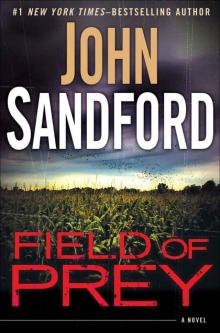 Field of Prey
Field of Prey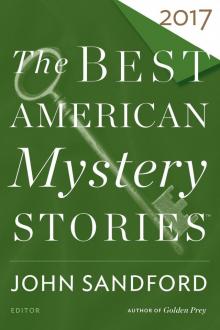 The Best American Mystery Stories 2017
The Best American Mystery Stories 2017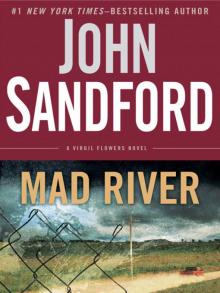 Mad River
Mad River Storm Front
Storm Front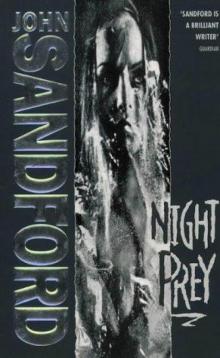 Night Prey
Night Prey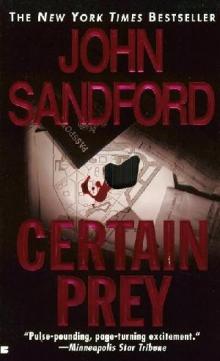 Certain Prey
Certain Prey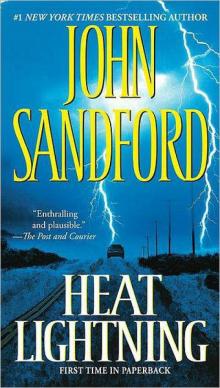 Heat Lightning
Heat Lightning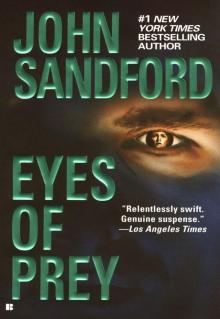 Eyes of Prey
Eyes of Prey Golden Prey
Golden Prey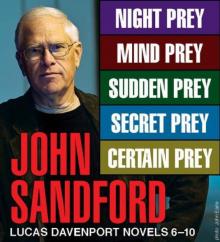 Lucas Davenport Novels 6-10
Lucas Davenport Novels 6-10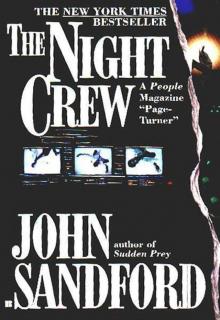 The Night Crew
The Night Crew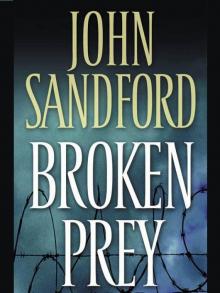 Broken Prey
Broken Prey Mortal Prey
Mortal Prey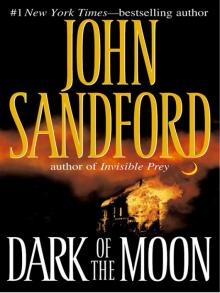 Dark of the Moon
Dark of the Moon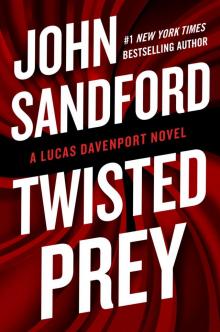 Twisted Prey
Twisted Prey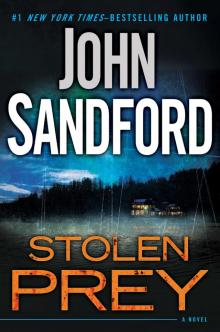 Stolen Prey
Stolen Prey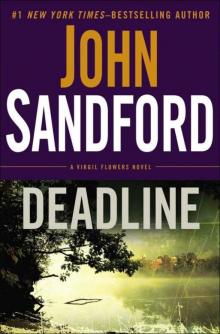 Deadline
Deadline Secret Prey
Secret Prey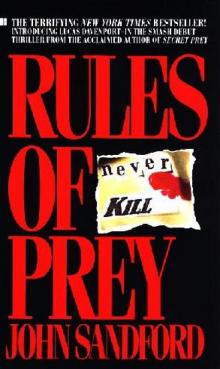 Rules of Prey
Rules of Prey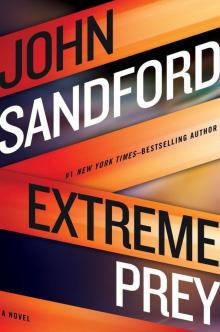 Extreme Prey
Extreme Prey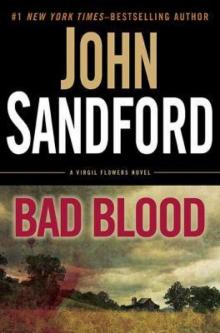 Bad Blood
Bad Blood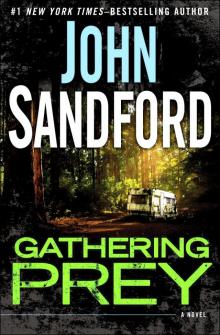 Gathering Prey
Gathering Prey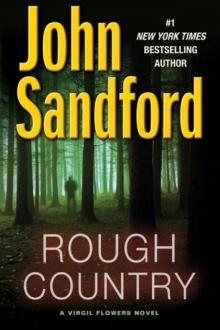 Rough Country
Rough Country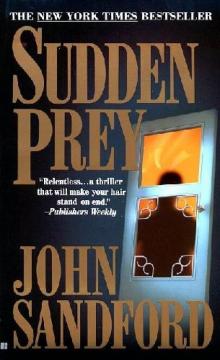 Sudden Prey
Sudden Prey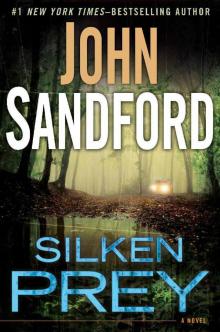 Silken Prey
Silken Prey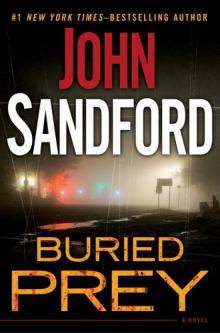 Buried Prey
Buried Prey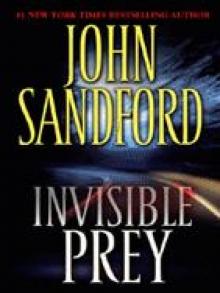 Invisible Prey
Invisible Prey Silent Prey
Silent Prey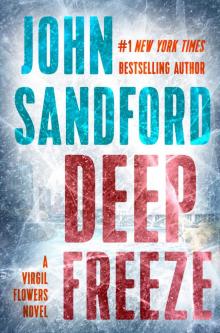 Deep Freeze
Deep Freeze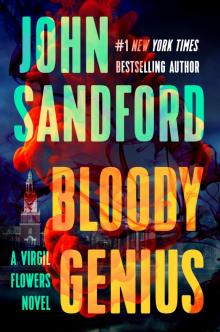 Bloody Genius
Bloody Genius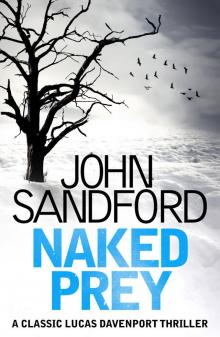 Naked Prey
Naked Prey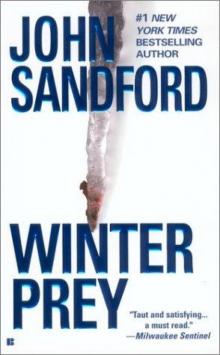 Winter Prey
Winter Prey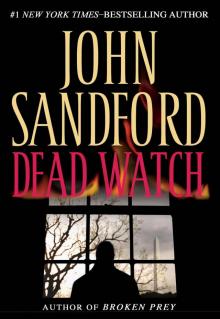 Dead Watch
Dead Watch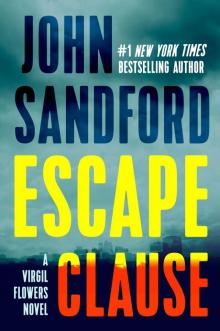 Escape Clause
Escape Clause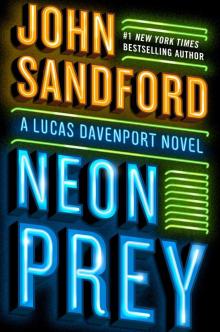 Neon Prey
Neon Prey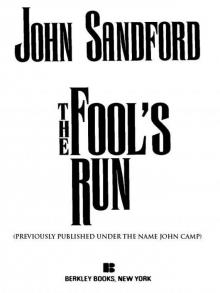 The Fool's Run
The Fool's Run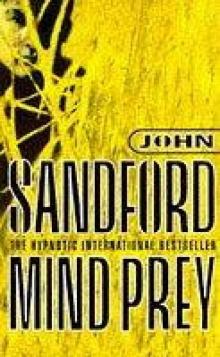 Mind Prey
Mind Prey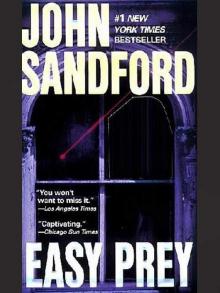 Easy Prey
Easy Prey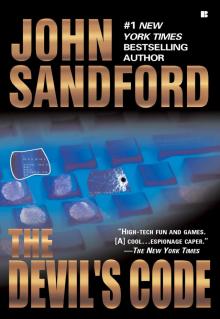 The Devil's Code
The Devil's Code Chosen Prey
Chosen Prey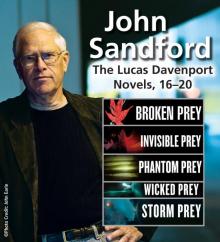 The Lucas Davenport Collection, Books 11-15
The Lucas Davenport Collection, Books 11-15 Shock Wave
Shock Wave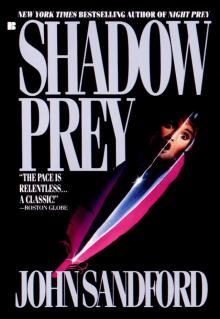 Shadow Prey
Shadow Prey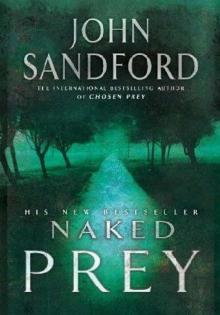 Naked Prey ld-14
Naked Prey ld-14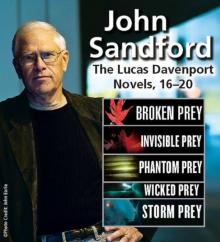 Lucas Davenport Novels 16-20
Lucas Davenport Novels 16-20 Invisible prey ld-17
Invisible prey ld-17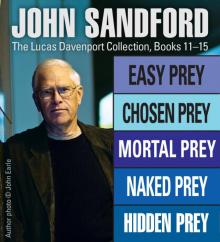 Lucas Davenport Collection: Books 11-15
Lucas Davenport Collection: Books 11-15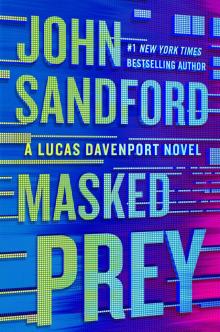 Masked Prey
Masked Prey![[Prey 11] - Easy Prey Read online](http://i1.bookreadfree.com/i/03/22/prey_11_-_easy_prey_preview.jpg) [Prey 11] - Easy Prey
[Prey 11] - Easy Prey Silent Prey ld-4
Silent Prey ld-4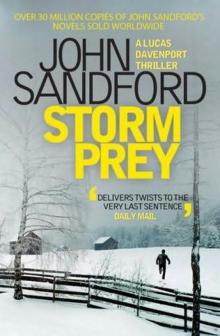 Storm prey ld-20
Storm prey ld-20 Eyes of Prey ld-3
Eyes of Prey ld-3 Certain prey ld-10
Certain prey ld-10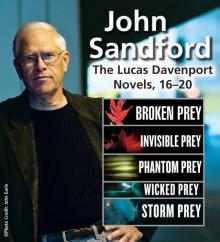 Lucas Davenport Collection
Lucas Davenport Collection Sudden prey ld-8
Sudden prey ld-8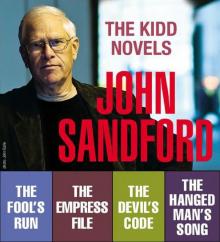 Kidd and LuEllen: Novels 1-4
Kidd and LuEllen: Novels 1-4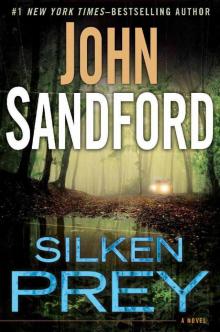 Silken Prey ld-23
Silken Prey ld-23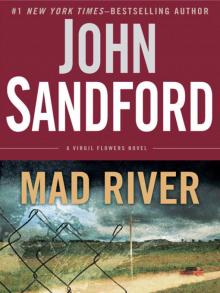 Mad River vf-6
Mad River vf-6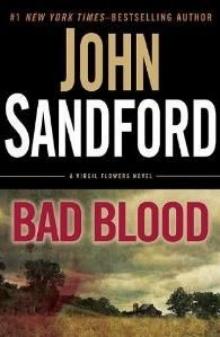 Bad blood vf-4
Bad blood vf-4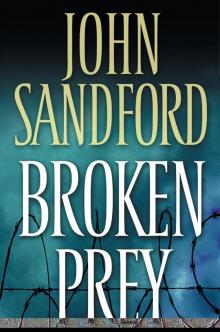 Broken Prey ld-16
Broken Prey ld-16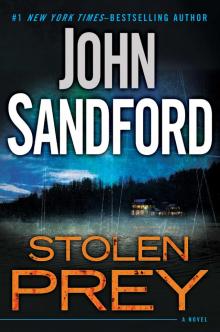 Stolen Prey p-22
Stolen Prey p-22 Night Prey ld-6
Night Prey ld-6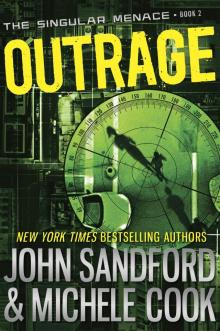 Outrage
Outrage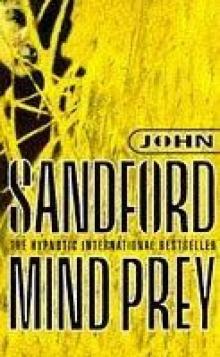 Mind prey ld-7
Mind prey ld-7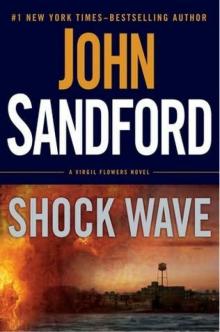 Shock Wave vf-5
Shock Wave vf-5 Easy Prey ld-11
Easy Prey ld-11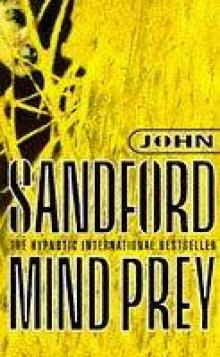 Prey 7 - Mind Prey
Prey 7 - Mind Prey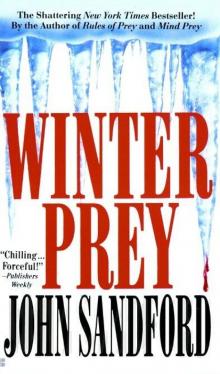 Winter Prey ld-5
Winter Prey ld-5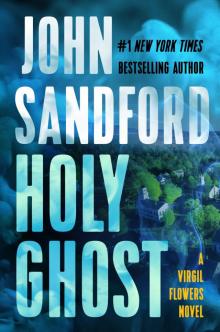 Holy Ghost
Holy Ghost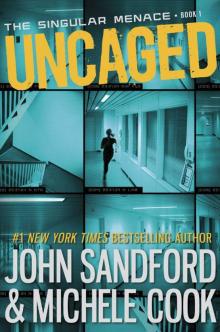 Uncaged
Uncaged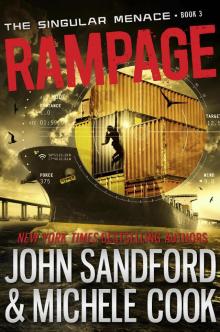 Rampage
Rampage Hidden Prey ld-15
Hidden Prey ld-15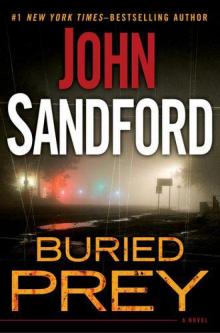 Buried Prey p-21
Buried Prey p-21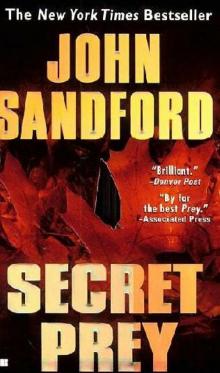 Secret Prey ld-9
Secret Prey ld-9 Chosen Prey ld-12
Chosen Prey ld-12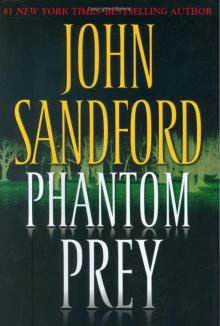 Phantom prey ld-18
Phantom prey ld-18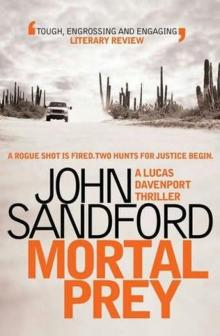 Mortal Prey ld-13
Mortal Prey ld-13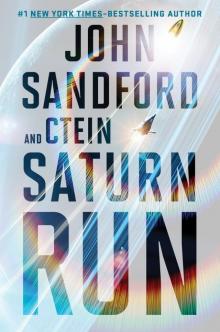 Saturn Run
Saturn Run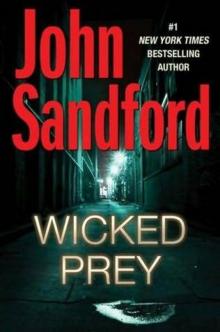 Wicked Prey
Wicked Prey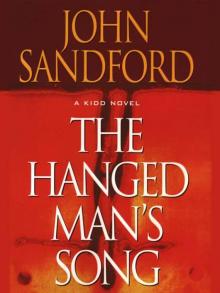 The Hanged Man’s Song
The Hanged Man’s Song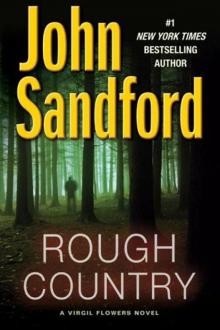 Rough country vf-3
Rough country vf-3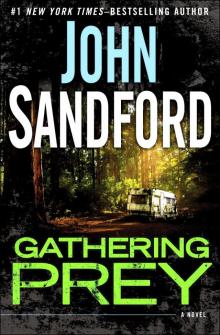 Prey 25 - Gathering Prey
Prey 25 - Gathering Prey